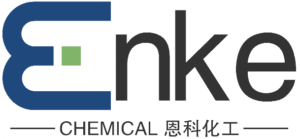Tributyl Phosphate (TBP)
Synonyms:
Phosphoric acid tributyl; Tri-n-butyl phosphate; Tributyl phosphate, 99% ; Phosphoric acid tri-n-butyl ester; Tributylphosphat; Antifoam T; Disflamoll TBP; TBP
Product information
Chemical Name: Tributyl Phosphate (TBP)
Cas No. : 126-73-8
EINECS No. : 204-800-2
Molecular formula: C12H27O4P
Molecular weight: 266.4
Download Data
Something Wrong with the documents?
- Request the right documents
Product Description
Tributyl phosphate (TBP) is a solvent with high boiling point and ester characteristics, with wide applications in industries such as defoamers and rare earth element extraction agents. As a well-known neutral organic phosphorus extraction agent, valued for its exceptional extraction performance and low acidity during back-extraction. In the extraction process, the phosphoric acid groups of the extracting agent form coordination complexes with rare earth elements, facilitating their separation and enrichment from rare earth leachate.
Here are specific examples of TBP’s applications in various industries:
Rare Earth Elements Extractant
TBP is employed as an extractant for metal chelation and the extraction of rare earth elements. It can extract cobalt, iridium, manganese, molybdenum, palladium, rhodium, nickel, uranium, and tungsten. Currently, it is widely used for the extraction of wet-process phosphoric acid purification and as an extractant for lithium metal extraction.
Aviation Hydraulic Fluid
TBP is employed as a heat exchange medium, pressure-resistant agent, and anti-wear agent in lubricating oils. It is used as an aircraft hydraulic fluid, such as the Skydrol series from Eastman.
Defoamer
Tributyl phosphate possesses low surface tension and is soluble in organic solvents but insoluble in water, making it suitable for defoaming applications across various industrial fields. In the dyeing printing, and coatings industries, it maintains the aesthetic appearance of products without causing craters or affecting the system. In the petroleum and metal processing manufacturing industries, it avoids the occurrence of silica stains or creaming, ensuring the quality of the products.
Plasticizer
TBP is utilized as a primary plasticizer for nitrocellulose, cellulose acetate, chlorinated rubber, and polyvinyl chloride.
Solvent
TBP serves as a solvent for gas chromatography, nitrocellulose, ethyl cellulose, coatings, inks, and adhesives.
Polymerization Inhibitor
It exhibits excellent inhibitory effects on acrylic esters, methyl methacrylate, acrylic acid, acrylonitrile, styrene, and butadiene. Its inhibitory performance surpasses that of phenols.
Storage
TBP should be sealed and kept in a cool, dry, and well-ventilated area. It should be protected from moisture, water, ignition sources, and heat. Common packaging options include galvanized drums, each weighing 200kg net, or square IBC packages weighing 1000kg.
Partnering up with a global leading material manufacturer that supplies diversified phosphate esters chemicals.
